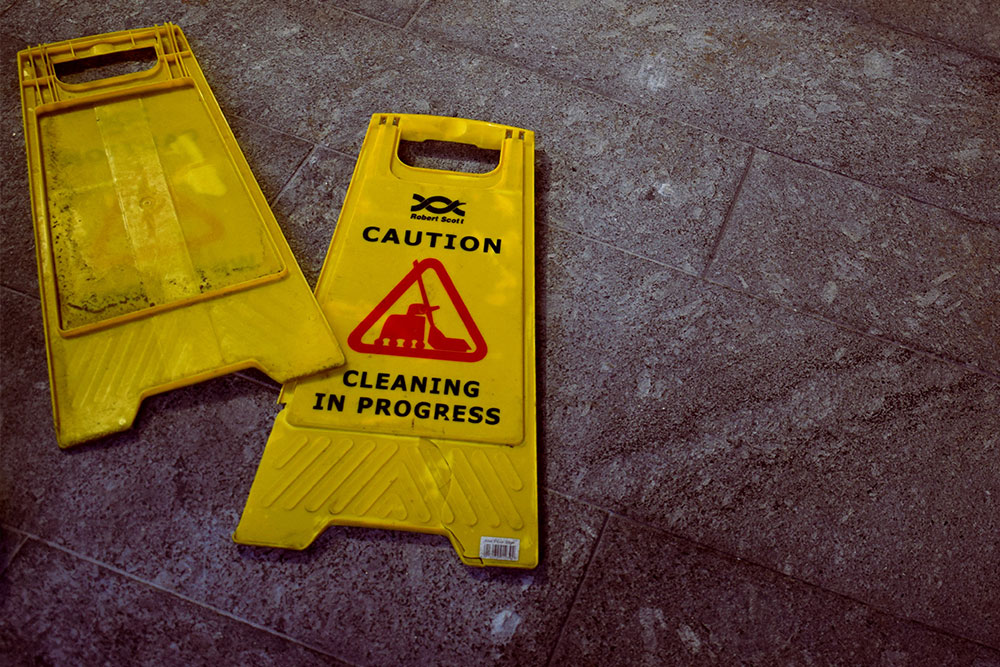Wisconsin Supreme Court Clarifies Constructive Notice Standard Related to Wis. Stat. § 101.11, Wisconsin’s Safe Place Statute

A recent Wisconsin Supreme Court decision held that a plaintiff need not prove the exact moment an unsafe condition commenced within the meaning of Wis. Stat. § 101.11 so long as the evidence is sufficient to prove it existed long enough to give the defendant constructive notice of its presence.
In Jose M. Correa, et al. v. Woodman’s Food Market, 2020 WI 43, Plaintiff slipped on an unknown substance in the dairy aisle while shopping at Woodman’s. After the fall, Plaintiff used a paper towel to wipe the substance off his shoe. Woodman’s security camera captured all of these events. In the lawsuit he filed, Plaintiff claimed that Woodman’s violated Wisconsin’s safe place statute which mandates, among other things, that “every owner of a place of employment or a public building now or hereafter constructed shall so construct, repair, or maintain such place of employment or public building as to render the same safe.” Wis. Stat. § 101.11.
To make out a claim under the safe place statute, Plaintiff must prove: “(1) there was an unsafe condition associated with premises; (2) the unsafe condition caused injury; and (3) Defendant had either actual or constructive notice of the unsafe condition before injury.” Hofflander v. St. Catherine’s Hosp., Inc., 2003 WI 77, ¶89, 262 Wis. 2d 539, 664 N.W.2d 545. At the close of discovery, Woodman’s moved for summary judgment arguing that Plaintiff could not show that Woodman’s knew the dairy product was on the floor and thus could not prove an essential element of his claim. The circuit court denied the motion because it concluded there were genuine issues of material fact.
At trial, Plaintiff introduced a security camera video showing the part of the store where he slipped and fell to prove how long the substance was on the floor. It was undisputed between the parties that there was no evidence to prove when the substance was deposited on the floor and that it is not possible to actually see the substance in the video. At the conclusion of Plaintiff’s case-in-chief, Woodman’s moved for a directed verdict arguing that Plaintiff’s failure to introduce evidence showing how the substance on which he slipped came to be on the floor necessarily defeats a “safe place” claim. The circuit court denied the motion, and the jury eventually found Woodman’s had constructive notice of the substance on the floor and that there had been a violation of the safe place statute.
On appeal, the Wisconsin Court of Appeals reversed the lower court decision by ruling that because the evidence before the jury provided “[no] indication of how long the hazard existed on Woodman’s floor,” the circuit court had “clearly erred in denying Woodman’s motion for a directed verdict.” The Wisconsin Supreme Court granted Plaintiff’s petition for review.
On review, the Wisconsin Supreme Court concluded that a plaintiff need not prove the exact moment the unsafe condition commenced, so long as the evidence is sufficient to prove it existed long enough to give the defendant constructive notice of its presence. The court also concluded that a jury may infer from the security camera video in this case that the unsafe condition existed long enough to give the defendant constructive notice of its presence.
The Correa decision makes it easier for a Plaintiff to prove constructive notice. Consequently, it is more important than ever to consider ways to document the steps taken to implement and enforce policies and procedures related to inspections.
This article is a publication of MWH Law Group LLP and is intended to provide general information regarding legal issues and developments to our clients and other friends. It should not be construed as legal advice or a legal opinion on any specific facts or situations. For further information on your own situation, we encourage you to contact the author of the article or any other member of the firm.
© MWH Law Group LLP 2020. All rights reserved.
CONTACT ATTORNEY ERIC L. ANDREWS
 Eric L. Andrews
Eric L. Andrews
Senior Associate Attorney, Milwaukee
735 N. Water Street, Suite 610
Milwaukee, WI 53202
P: (414) 509-7489 / F: (414) 436-0354
E: eric.andrews@mwhlawgroup.com

